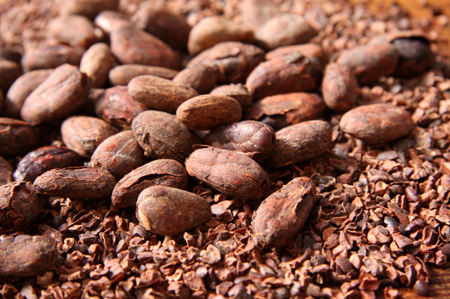How Ruby is Changing the Color of Chocolate
Category: Cocoa

(Candy Industry) – It used to be that if you wanted pink chocolate, you had to rely on white chocolate dyed to look pink. But Ruby Chocolate has changed that.
It’s been more than one year now since the company launched Ruby chocolate, which is derived from Ruby cocoa beans. It has an intense berry-fruitiness taste without the addition of any flavor or color.
It was discovered and created by Barry Callebaut, the world’s leading manufacturer of high-quality chocolate and cocoa products, after ten years of development. Since its launch, a broad range of Ruby chocolate products have debuted in retail stores and chocolate boutiques.
And much of the international world has fallen in love Ruby Chocolate.
In fact, one of the biggest trends this year’s at ISM show in Germany was the new pink chocolate, which Barry Callebaut calls, “the fourth chocolate.” The show floor nearly took on a pink hue, with nearly every booth seeming to feature either a new Ruby Chocolate product, or a recipe idea.
Barry Callebaut first launched a Ruby chocolate product in Japan in early 2018 citing the country’s innovative food culture as the reason.
Specifically, the first product was a Ruby Chocolate KITKAT, which did very well. In fact, after its launch last year, KITKAT Chocolatory Sublime Ruby accounted for 30 percent of sales of KITKAT Chocolatory in Japan. And now the product is available in 26 markets.
And in March 2019, they launched a follow-up product: A new KITKAT Everyday Nuts and Cranberry, which combines Ruby chocolate with nuts and dried cranberries — a combination favored and proposed by pâtissier chef Yasumasa Takagi.
All signs point to success. Current research shows that 42 percent of the Japanese population is aware of Ruby chocolate and 5 percent have already tasted it, even though it was not broadly available in retail. And 82 percent say they are interested in tasting Ruby in the future.
Barry Callebaut’s RubyChocolate.com also features a page for consumers to personally share how much they love the product, and it’s flooded with beautiful pink images of Ruby, uploaded by consumers.
Many of them are in languages other than English though, and that’s likely because regulatory issues have kept the trend from taking off in the United States. In fact, a map on RubyChocolate.com shows just four locations where consumers can purchase Ruby Chocolate products. Although they all point to websites, which can be reached from anywhere, it’s not quite as prevalent as it could be.
While Barry Callebaut expects Ruby Chocolate to eventually have a similar market share to white chocolate in the U.S. — which is about 10 percent — they are still working to get the standard of identity for the U.S.
In the meantime, they’re marketing products in the states as having Ruby cacao, rather than Ruby Chocolate.
Chocolove is among those embracing the cacao. They’ve launched a Pink Grapefruit Ruby Cacao Bar, which features 34 percent cocoa content. It has fruity berry notes of Ruby cacao, which are masterfully paired with the tangy citrus flavor of pink grapefruit.
The same company also has a passion fruit Ruby cacao bar, which also features 34 percent cocoa content, and has fruity berry notes of Ruby cacao artfully balanced with the tropical sweet tart flavor of passion fruit.
Another company using the cacao is Vosges, which sells a Ruby Truffle collection that includes two Ruby Cerise truffles featuring vanilla, cherry gelée, hibiscus, Ruby, freeze-dried cherry and pink peppercorn. The box also includes two Sour Mango Ruby, which feature passion fruit, mango, salted caramel, Ruby, and edible purple flower petal.
But how exactly does Barry Callebaut make Ruby Chocolate and Ruby cacao? Well, it’s mostly a secret.
The company says, “The processing starts with the selection of the right cocoa pods, which are specifically selected on their properties to deliver the nice Ruby taste and color. Via the unique processing, these properties are maintained and even enforced in chocolate. The process itself is knowledge which Barry Callebaut prefers to treat as confidential.”
Barry Callebaut says it’s made from a unique bean with specific precursors.
And the company was able to create Ruby chocolate after developing a test that allows them to identify if the beans they source meet the required specifications of the unique cocoa bean used to produce the innovative breakthrough, Ruby chocolate.
“Studies show that Ruby chocolate satisfies a need no other chocolate can. It stands to become the biggest innovation in the chocolate industry in 80 years, since the launch of White chocolate,” according to Barry Callebaut.
If that’s true, the future is looking quite Ruby.

